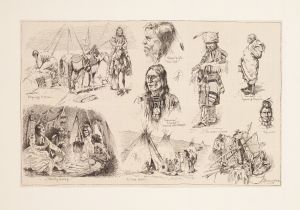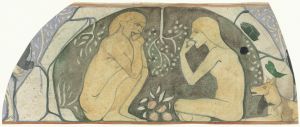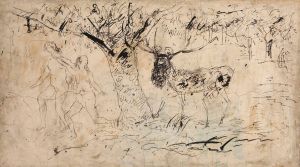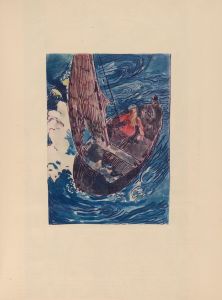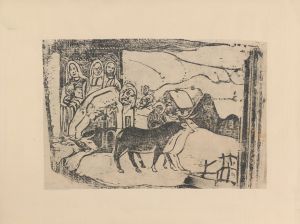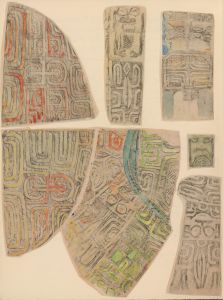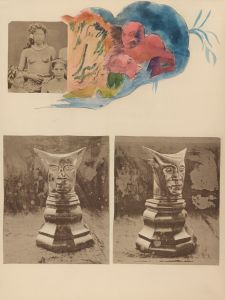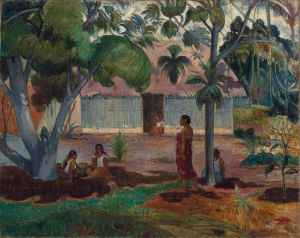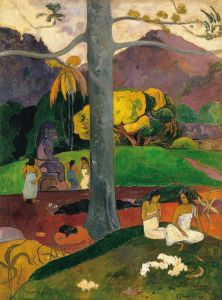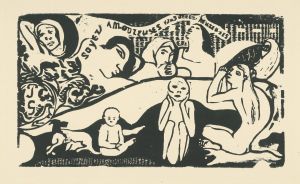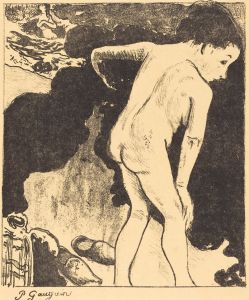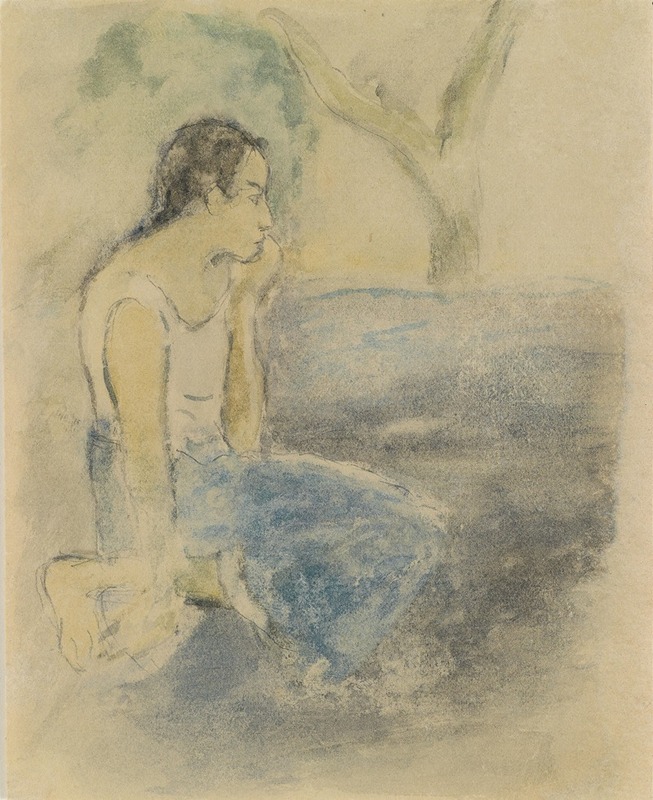
Tahitien assis
A hand-painted replica of Paul Gauguin’s masterpiece Tahitien assis, meticulously crafted by professional artists to capture the true essence of the original. Each piece is created with museum-quality canvas and rare mineral pigments, carefully painted by experienced artists with delicate brushstrokes and rich, layered colors to perfectly recreate the texture of the original artwork. Unlike machine-printed reproductions, this hand-painted version brings the painting to life, infused with the artist’s emotions and skill in every stroke. Whether for personal collection or home decoration, it instantly elevates the artistic atmosphere of any space.
"Tahitien assis" is a painting by the renowned French Post-Impressionist artist Paul Gauguin. Created during Gauguin's first stay in Tahiti, the artwork reflects his fascination with the island's culture and people, which became a central theme in his work. Gauguin traveled to Tahiti in 1891, seeking to escape European civilization and immerse himself in what he perceived as a more 'primitive' and pure society. This journey marked a significant period in his artistic career, influencing his style and subject matter profoundly.
The painting depicts a seated Tahitian figure, capturing Gauguin's interest in the native people and their way of life. Gauguin's approach to portraying Tahitian subjects was characterized by a vibrant use of color, bold outlines, and a departure from traditional Western artistic conventions. He sought to convey the spiritual and mystical qualities he associated with Tahitian culture, often incorporating symbolic elements into his compositions.
Gauguin's time in Tahiti was marked by a complex relationship with the island and its inhabitants. While he was inspired by the natural beauty and cultural richness of Tahiti, his perspective was also shaped by the colonial attitudes of the time. His works from this period, including "Tahitien assis," reflect both admiration and a degree of exoticism, which has been the subject of much critical discussion.
The painting exemplifies Gauguin's distinctive style, which blends elements of Impressionism with Symbolism. His use of color is particularly noteworthy; he employed a palette that was both vivid and unconventional, aiming to evoke emotion and convey deeper meanings. The figure in "Tahitien assis" is rendered with a sense of tranquility and introspection, inviting viewers to contemplate the inner life of the subject.
Gauguin's Tahitian paintings, including "Tahitien assis," played a significant role in the development of modern art. They influenced subsequent generations of artists, contributing to movements such as Primitivism and Fauvism. His work challenged traditional notions of representation and opened new avenues for exploring the relationship between art and culture.
Despite the acclaim Gauguin's Tahitian works have received, they also raise important questions about cultural representation and appropriation. Gauguin's portrayal of Tahitian life was filtered through his own artistic vision and the colonial mindset of his era, which can complicate contemporary interpretations of his work.
"Tahitien assis" remains an important piece within Gauguin's oeuvre, offering insight into his artistic journey and the broader cultural exchanges of the late 19th century. The painting is a testament to Gauguin's enduring legacy and his impact on the trajectory of modern art.





